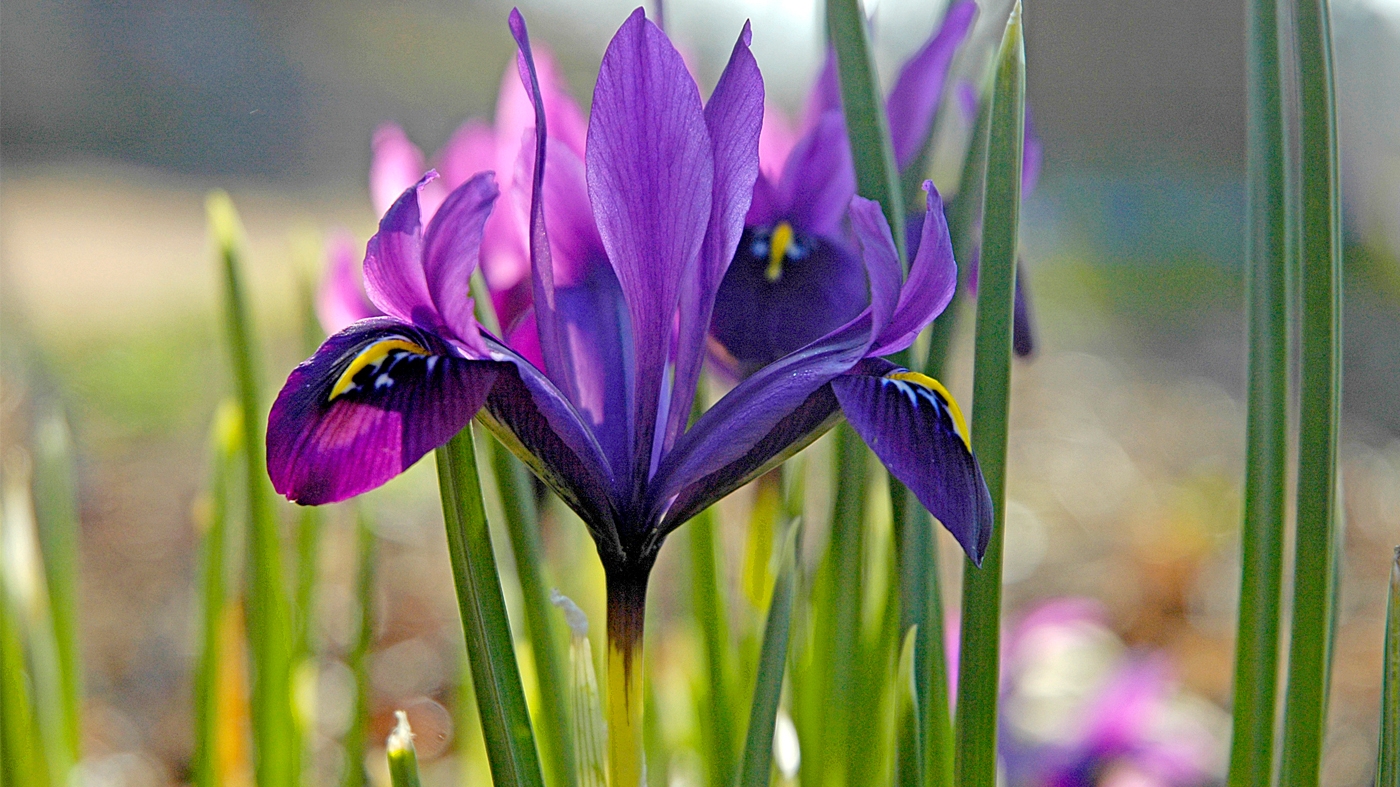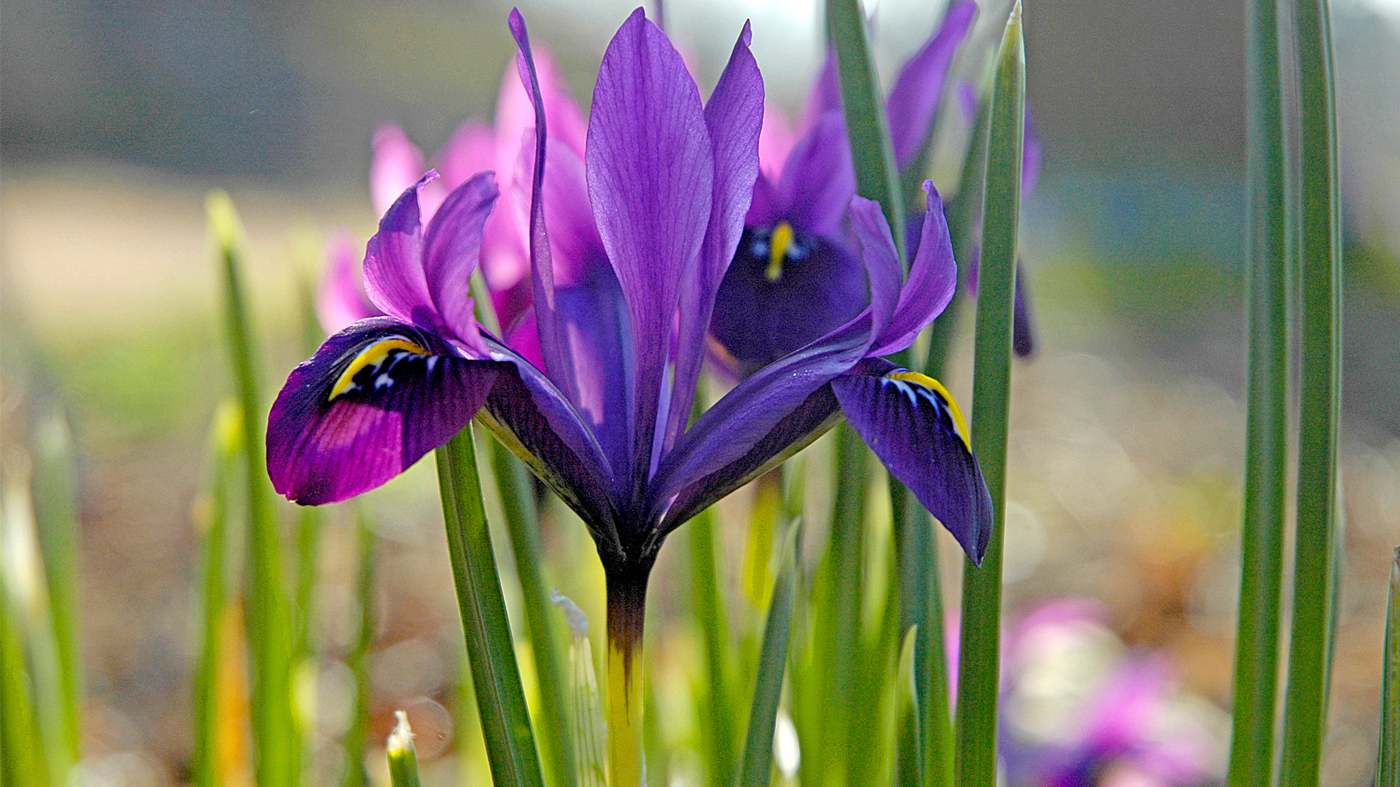

What's in Bloom
Bloom Highlights
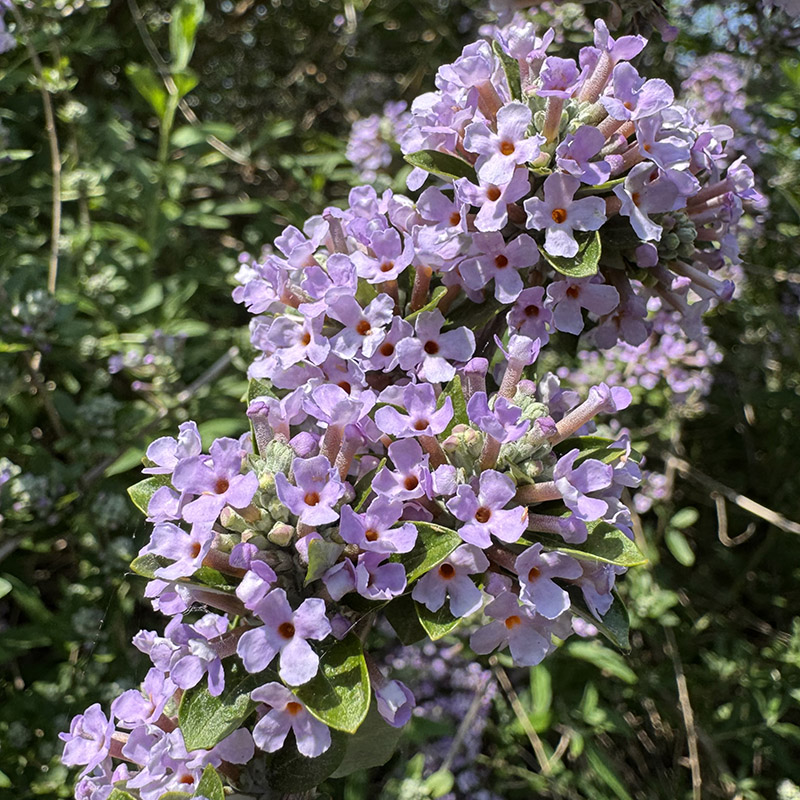
Buddleja alternifolia
Fountain Butterfly Bush
This plant is native to the temperate zones of mountainous areas of China where it is found in thickets and along banks of rivers and streams. This multistemmed shrub has a loose, arching habit that gives the plant a weeping or cascading effect. The long, arching stems are highly branched and mature to have smooth, dark brown bark, and bear leaves alternately. The green leaves are tomentose underneath and are narrowly lanceolate with smooth margins. From the leaf axils of second-year growth, dense panicles of lilac-like, lightly fragrant flowers are produced. The flowers have salverform petals (meaning that the petals are fused into a tube before spreading out distinctly). After the flowers fade, small, dry capsule fruits are produced. It is generally believed that Carolus Linnaeus named this genus to honor the English botanist and clergyman Adam Buddle. The specific epithet is Latin for “alternating leaves” as a description of the leaf arrangement on the branches, unlike opposite or whorled arrangements.
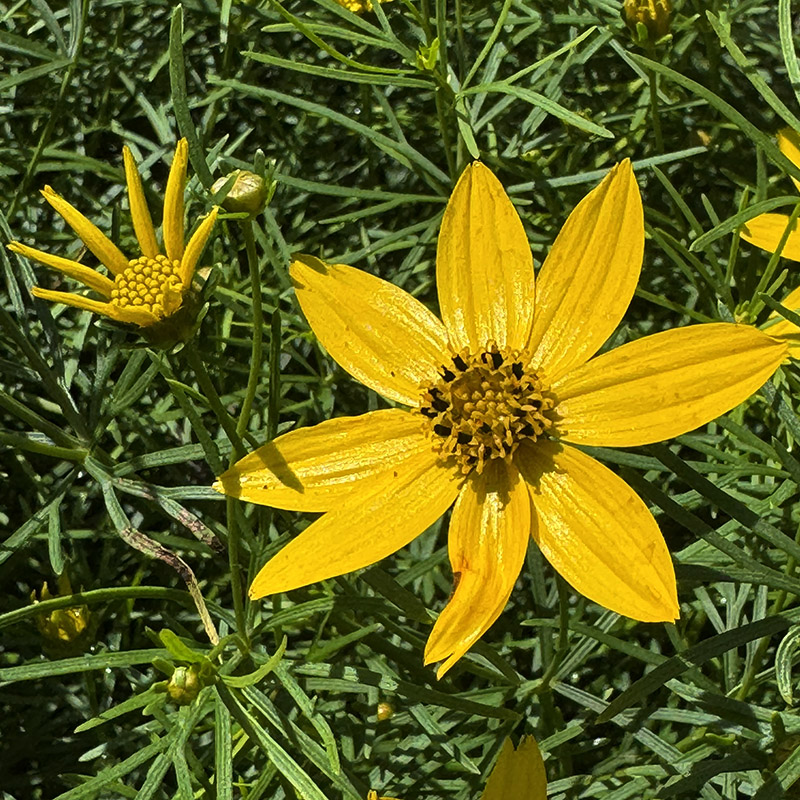
Coreopsis verticillata ‘Golden Showers’
Golden Showers Threadleaf Coreopsis
The native range of Coreopsis verticillata extends from Arkansas and Mississippi eastward through Florida and Georgia, and northward through Tennessee and Kentucky to Maryland. It is naturally found in open pine forests, pine savannas, and oak savannas. It has a dense, clumping, mounding habit. The smooth, green, wiry stems stand mostly erect and branching. The stems produce sessile whorls of deeply, pinnately lobed, thread-like leaves that give the plant a frothy effect. From leaf axils and the terminus of the stems, daisy-like flowers are produced. Each inflorescence has eight glossy yellow ray florets around a button of yellow, star-like disc florets. This cultivar is noted for its golden yellow flowers and its taller stature compared to other cultivars. The genus name comes from the Greek words koris meaning “bug” or “tick” and opsis meaning “look,” which refers to the appearance of the acene fruits that look like ticks. The specific epithet comes from the Latin word verticillatus meaning “whorled,” as the leaves have a whorled arrangement on the stems.
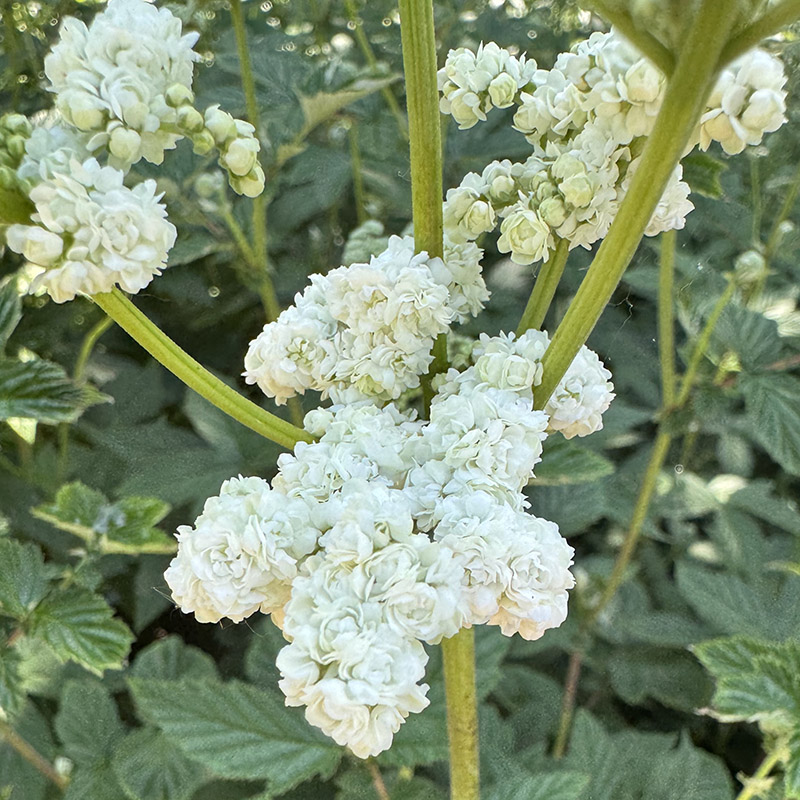
Filipendula ulmaria ‘Plena’
Queen-of-the-Meadow
Filipendula ulmaria is native to much of Europe and western and northern Asia, where it is found in temperate marshes, fens, floodplain forests, swamps, and along riverbanks. It has a clumping, foliar habit before bolting erect and branching to flower. The green stems produce leaves alternately. The pinnately compound leaves have a red rachis (or stem) and seven to nine leaflets. The dark green leaflets are ovate to lanceolate with deep veins and doubly serrate margins. The basal pair of leaflets clasp around the stem like a collar, while the terminal few leaflets are semi-fused into a single three- to five-lobed leaflet. The terminus of each stem produces compound cymes of small white, lightly fragrant flowers. Each flower has five sepals, five petals, and five to 20 stamens that give the cyme a fuzzy appearance. This cultivar is noted for its double flowers with densely packed petals. The genus name is a compound of the Latin words filum and pendulus meaning “thread” and “hanging” respectively, as the tubers appear to hang together by thread-like roots. The specific epithet means resembling the genus Ulmus. The cultivar name is derived from the Latin word plenus meaning “full” or “doubled.”
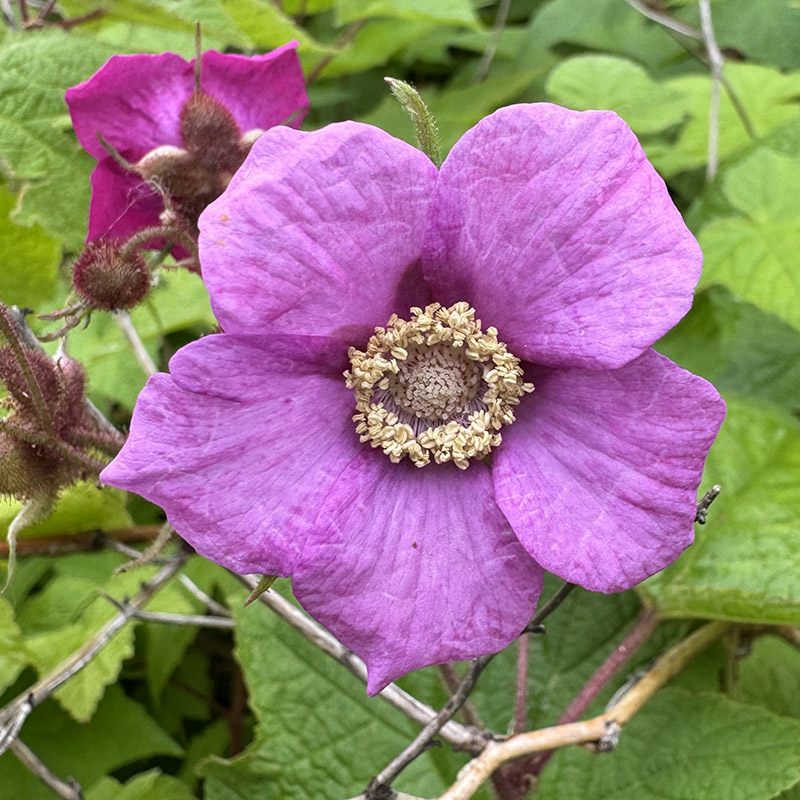
Rubus odoratus
Purple Flowering Raspberry
This plant is native to a large portion of eastern North America from the Great Lakes region through southeastern Canada to Nova Scotia, southward through the Ohio River Valley and the Appalachian Mountains to northern Alabama and Georgia. It is found in moist, shaded areas of open woodlands and thickets. This multistemmed shrub has an upright, spreading habit. The branching stems are green and mature to produce smooth, coppery-brown bark that peels with age. All stems, young and old, are covered in fine, red hairs and sparingly have prickles. The green leaves are alternately arranged, palmately lobed with five lobes, and have serrate margins. From the leaf axils and shoot termini, clusters of solitary flowers are produced. The flowers are fragrant with five hairy, fringed sepals; five broad, cup-like, magenta-purple petals; and numerous yellow stamens all around a button of many pistils. The flowers give way to an aggregate of red, drupelet fruits that are edible. The genus name Rubus is the Latin word for “brambles” such as raspberries and blackberries, while the specific epithet is Latin for “fragrant.”
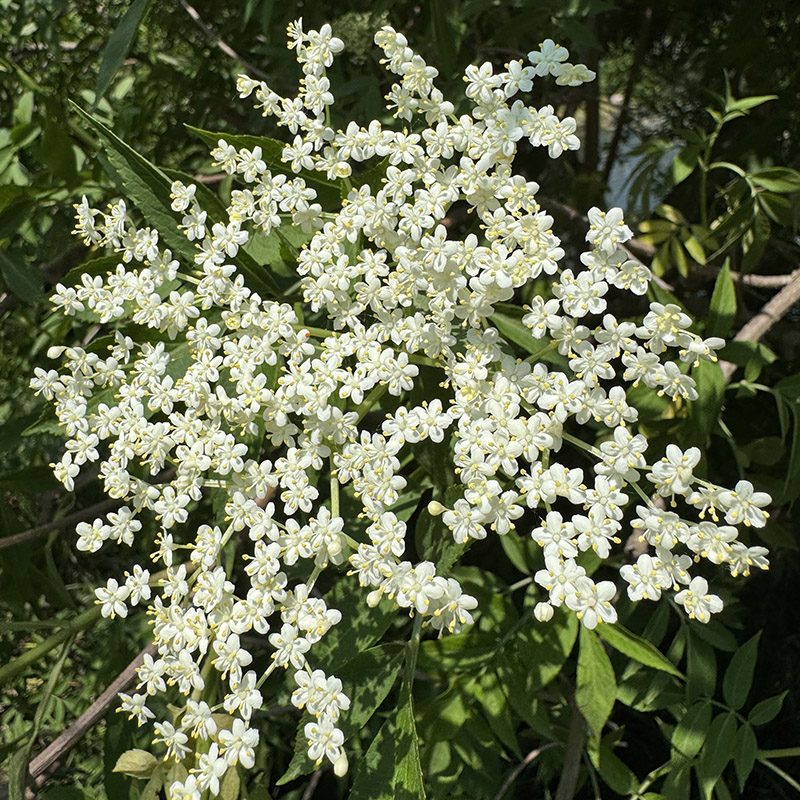
Sambucus canadensis
American Elderberry
This suckering shrub is native from the Rocky Mountains to the east coast in the United States, and its range extends north into southern Canada and southward through Mexico and Central America into South America as far south as Bolivia. With such an expansive range, the natural habitats in which this plant is found are just as varied, from floodplains, riparian thickets, fens, and streambanks to dry grasslands, sand dunes, and along roadsides. This multistemmed shrub has a loose, upright, spreading habit with canes that branch and arch as they grow. The stems are bright green and mature to produce silvery, light-brown bark with prominent lenticels. The leaves are oppositely arranged on the stems and are pinnately compound. Each leaf usually has seven lanceolate leaflets with serrate margins. The terminus of each stem produces a large cyme of many tiny, cream-colored flowers that are lightly scented and reminiscent of lemons. By late summer, the flowers give way to small, dark purple to black, round berries that are edible and have been historically used to make jams and wine. The genus name appears to come from the name of an ancient Greek instrument called a sambuca, as the canes of plants from this genus were used in its construction. The specific epithet means “from Canada.”
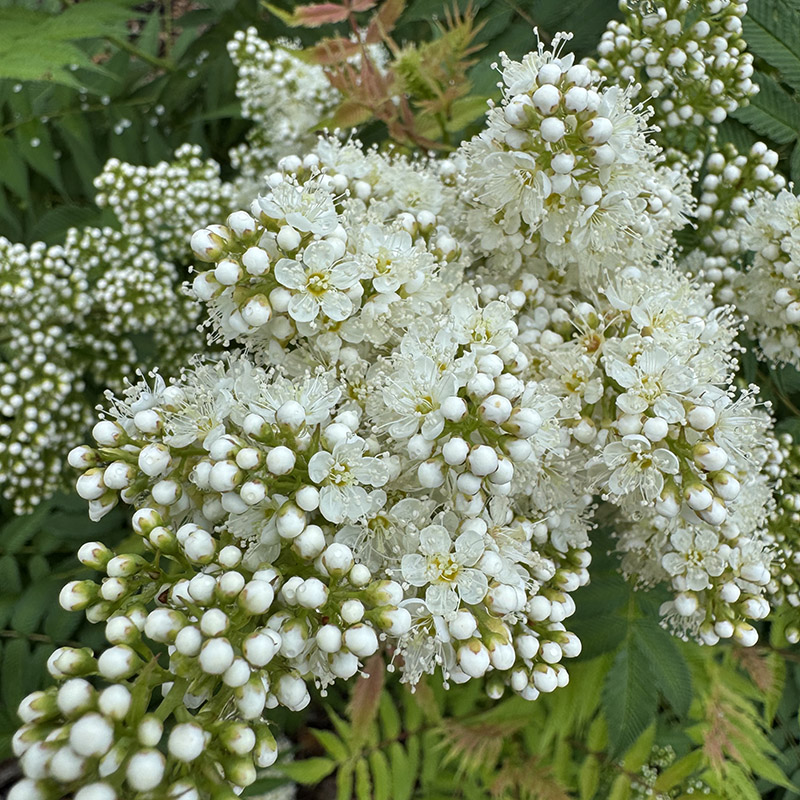
Sorbaria sorbifolia
Ural False Spirea
This plant is found in open forests and along the banks of streams and ponds. It is native to Russia east of the Ural Mountains, Mongolia, north and northeastern China, the Korean Peninsula, and Japan. This shrub has an erect, mounding habit. The green stems are branching, bearing leaves alternately, and they mature to produce smooth, reddish-brown bark that exfoliates. The leaves are pinnately compound with 13 to 25 lanceolate leaflets with serrate margins. The leaves emerge reddish before transitioning to chartreuse and maturing to dark green. In summer, the terminus of each branch produces a dense, pyramidal panicle of small, white flowers. Each flower has five green sepals, five round white petals, and many white stamens, all around five pistils. The flowers produce follicle fruits that are small and insignificant. Both the genus name and specific epithet are derived from the genus name Sorbus, which it resembles and to which it is closely related.
